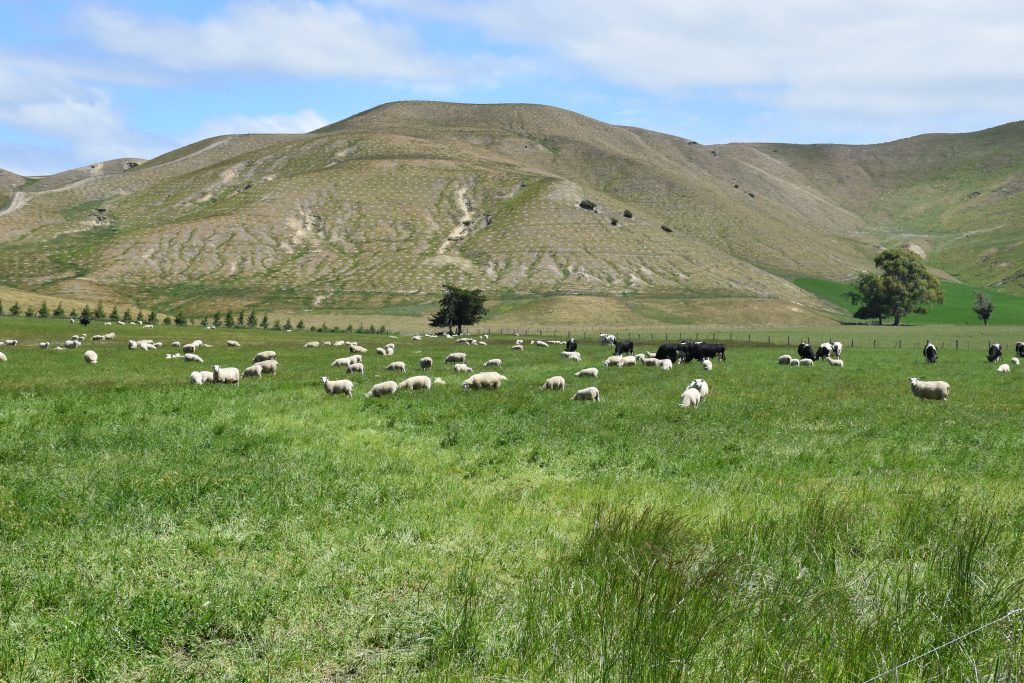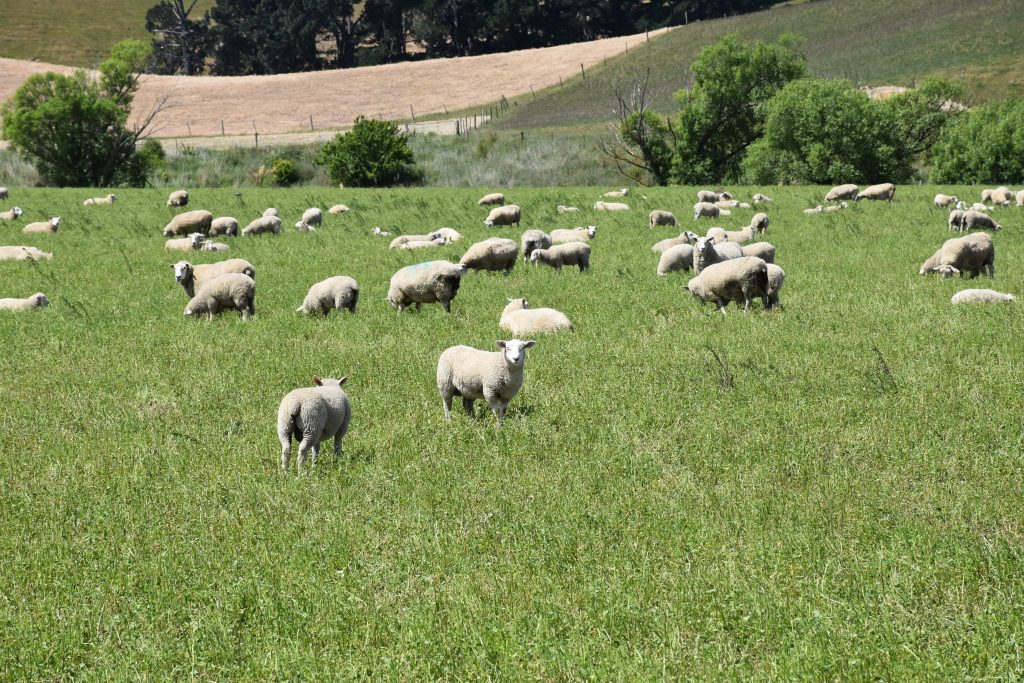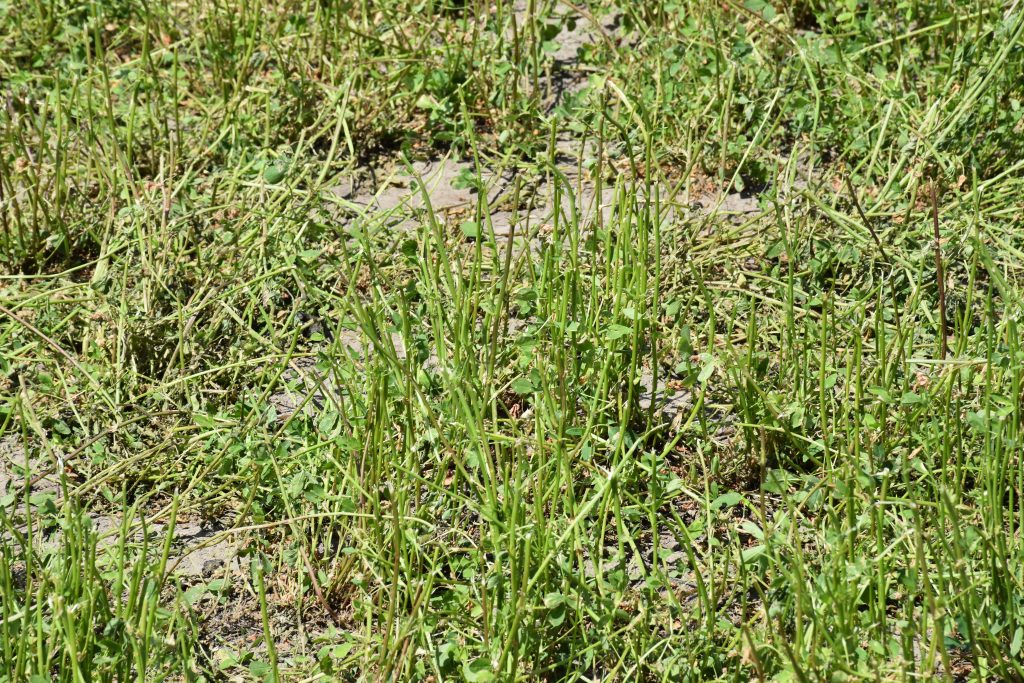While at Bonavaree last week, Prof Moot took the opportunity to question Fraser about his current grazing management of lucerne.
Fraser highlighted that they missed most of the rain the rest of the country has experienced in the last month so the land is drying out quickly. He is hopeful that he can get through to around Christmas but sees the recovery rate of the just grazed lucerne is already slowing down. This could mean a faster rotation to take what comes back and having to sell stock at lighter weights than he would like. But he is hopeful that with one more rainfall event he will make it and most lambs will go prime to slaughter.

One thing he has changed is the bull grazing with the ewes and lambs. When he has excess spring feed the bulls are kept full and may move 1-2 days before the ewes and lambs. However, in a dry spring, the bulls are left behind the ewes and lambs for 1-2 days to clean up the stalk and ensure the highest quality feed is being fed to the highest priority stock – lactating ewes and lambs. The lambs need to be growing ahead of any fall in the schedule and can only do that on high quality herbs and legumes at this time of year – as the grasses all go to seed and their quality crashes. One thing he won’t be doing is conserving feed this spring – the best use of lucerne at the moment is going down an animals throat – the last two years of above average rain means there is silage and hay available for the summer and Fraser is confident his system is resilient to the annual changes in feed supply that challenge dryland farms.


